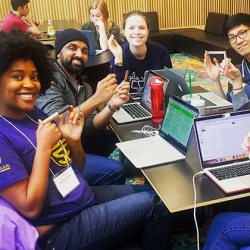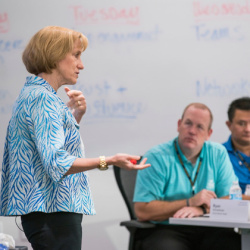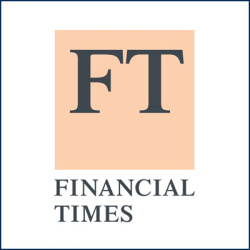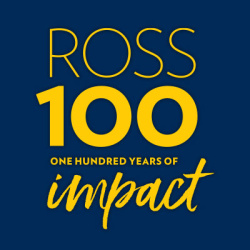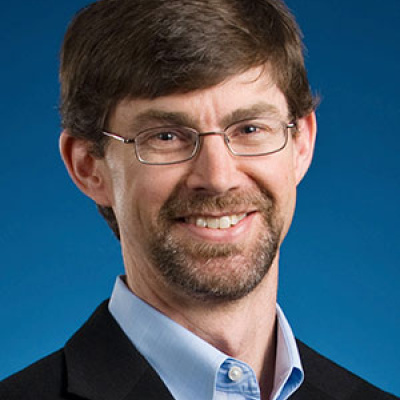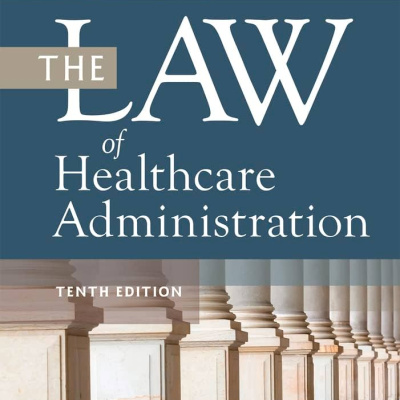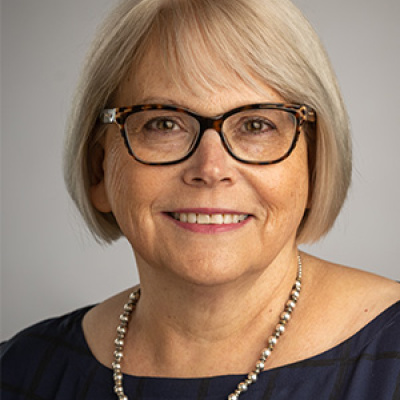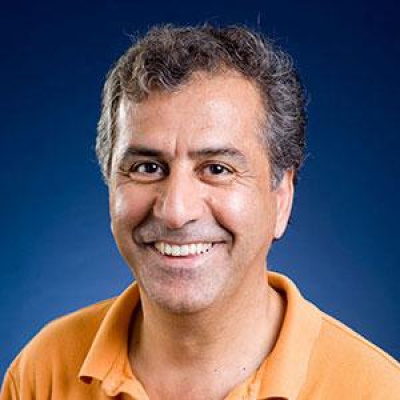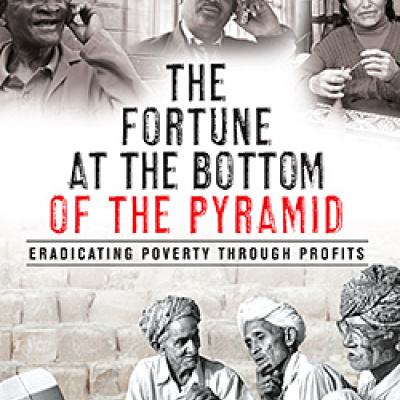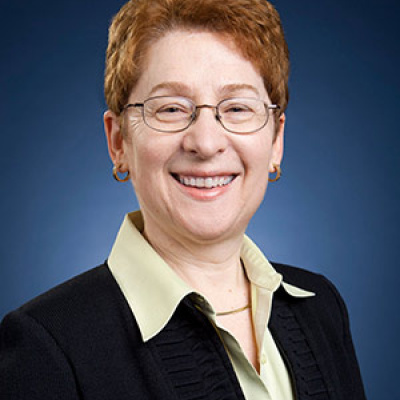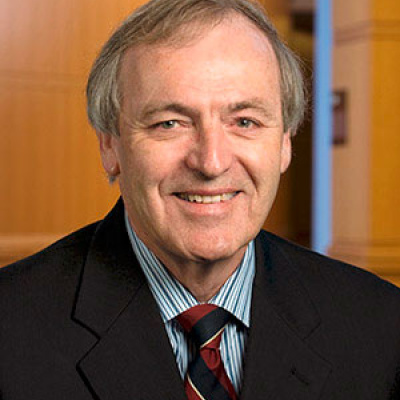Explore the faculty research, thought leadership, and groundbreaking philosophies that established Michigan Ross as one of the world’s top business schools.

In 2004, Ross finance Professors M.P. Narayanan and Nejat Seyhun's research revealed that thousands of corporate executives were systematically backdating their executive option awards to pocket hundreds of thousands of dollars in extra compensation illegally. The authors’ research proved difficult to publish, however. Referees and editors refused publication because the authors were “accusing the captains of American industry of outright fraud." Eventually, following dozens of press appearances between 2004 and 2006, the attitudes changed. Soon afterward, the floodgates of civil and criminal lawsuits opened, following a Wall Street Journal story truly accusing the top executives of outright fraud. Finally, one editor relented in 2008 and the research was published as is. Subsequent investigations indeed found that many executives, in collusion with the board of directors as well as the company human resources executives, went so far as to make up fake meeting dates and fake meeting minutes and fraudulently altered corporate documents to perpetuate their fraud. Finally, the U.S. Securities and Exchange Commission changed the option award rules to end option-award backdating. Narayanan and Seyhun's research underlines the importance of good corporate governance policies in containing executives’ worst instincts and stopping them from preying on their own shareholders.

In 2018, Professor Tom Lyon led a team of scholars who published a groundbreaking article about corporate political responsibility titled “CSR Needs CPR” in the California Management Review. The article argued that corporate social responsibility was an insufficient measure of corporate contribution to society and that stakeholders who care about CSR should also pay attention to corporate political responsibility. In 2019, Elizabeth Doty, adjunct faculty at Presidio Graduate School, contacted the Erb Institute at the University of Michigan and suggested turning the article into an industry roundtable dedicated to working with a select group of influential business leaders and their companies to bring to life the core precept of the article – the need to better align companies’ political spending and lobbying with their commitments to values, purpose, sustainability, and stakeholders. Thus, the Erb Corporate Political Responsibility Taskforce was founded in 2020. Lyon and Doty have developed the taskforce into a nationally recognized forum with the goal of making CPR a new norm for business. The taskforce operates under Chatham House Rule and has 20 members from some of the most recognized brands in the United States who share best practices and address CPR challenges. In 2023, the taskforce released the non-partisan Erb Principles for Corporate Political Responsibility, with five major companies as inaugural signatories. Looking ahead, the taskforce will continue building its integrated framework and engage more companies in applying the Erb Principles. Lyon continues his work in this space with his recently published volume Corporate Political Responsibility.

The root of the Great Financial Crisis of 2008-2009 lay in poor-quality residential mortgage loans made by financial institutions. A set of academic research papers established that lenders made poorer quality loans when they anticipated selling the loans to investors rather than continuing to own the loans until they matured. When loans were sold, a complex securitization process led to a large distance between the originator of a mortgage and the final investor in the loans. Amit Seru, PhD '07, and co-authors established in an important series of papers that focused on 1) keeping most characteristics of loans the same, loans that were only marginally easier to securitize had significantly higher default rates than those that were marginally more difficult to securitize, 2) (in work with Professor Uday Rajan) securitized loans, the interest rate (which represents the compensation to investors for bearing the risk of default by the borrower) became an increasingly worse predictor of default in the build-up to the GFC, and 3) information passed on to investors by mortgage securitizers was limited and sometimes outright fraudulent. In another crucial strand of work, Professor Amiyatosh Purnanandam demonstrated that 1) loans held by banks on their own balance sheets had lower default rates than otherwise identical loans sold by banks to investors and 2) (in work with Taylor Begley, PhD '14, and Kuncheng Zheng, PhD '15) even with securitized loans, default rates were lower when the riskiest tranche was held by the lender rather than sold to investors. Collectively, the work done by Ross faculty and PhD alums showed that the ability to securitize mortgage loans undermined the incentives of lenders to the point that low-quality mortgage loans were made, essentially providing the dry timber that fueled the GFC.

The article "Social Distancing as a Control Mechanism" by Professor James Westphal, is part of a larger stream of research that developed a more sociological perspective on corporate leadership and governance, an area of scholarship that had been largely dominated by economic perspectives into the 1990s. In a series of studies, Westphal and colleagues revealed a collection of social and psychological mechanisms by which governance policies, structures, and practices that were assumed to promote the economic interests of shareholders and other stakeholders were frequently subverted in ways that served the interests of powerful corporate elites. One such mechanism was "social distancing," a social sanction in which corporate directors who participated in governance reforms that threatened to increase board control over top management at one firm were socially isolated and even ostracized at other firms where they served on the board. They were less likely to be invited to informal meetings, and other directors were less likely to build on their comments and suggestions or solicit their opinions on strategic issues in formal board meetings. Directors who experienced social distancing, witnessed it firsthand, or were socially connected to a director who experienced it, were less likely to participate subsequently in elite-threatening actions. In that sense, the social distancing that Westphal identified parallels and anticipates the social distancing that we all learned about and practiced during the COVID-19 pandemic. But unlike social distancing during a pandemic, social distancing in corporate leadership, like the other social and psychological mechanisms that the authors uncovered, helped maintain a system that serves the interests of a powerful few rather than the many who depend on it for employment, goods and services, and wealth creation.

In 1984, former faculty member Birger Wernerfelt introduced a paradigm shift in business strategy with his paper "A Resource-Based View of the Firm." Prior to this transformative work, the discourse on business strategy was predominantly centered around external market factors and competitive forces.
Wernerfelt challenged this conventional wisdom by presenting the argument that a firm's internal resources, ranging from tangible assets like machinery to intangible assets like reputation, could be the key to creating a competitive advantage. This theory, known as the Resource-Based View, asserts that for resources to offer a firm sustained competitive advantage, they must be valuable, rare, and difficult to substitute or imitate.
The RBV has had profound implications and has changed how firms undertake strategic planning by emphasizing the importance of leveraging internal assets for competitive advantage. Wernerfelt's paper has been cited in thousands of academic publications and is now a staple in business school curricula worldwide.

Expanding on his dissertation thesis, completed in 2003, Professor Paolo Pasquariello's powerful insight (published in 2007) demonstrates that financial contagion (the spread of a shock from one financial market to many) could occur due to the simple, and highly plausible, heterogeneous private information of speculators about fundamentals. Financial contagion is an increasingly common phenomenon of global concern, especially during financial crises. Importantly, Pasquariello's theoretical multi-market setting rules out all the more complicated explanations of contagion --- usual suspects such as correlated information and/or liquidity and portfolio rebalancing --- while linking it to some of the main features of globalization, the expansion of and access to international financial markets.

Changes in health care structure following World War II brought the need for increased legislation, regulations, and court oversight to the industry. Professor Arthur Southwick of the Michigan Business School was a leader in developing these diverse sources into a coherent framework that enabled academics, healthcare leaders, and students to understand this emerging area of law.
According to Wharton Professor Arnold Rosoff, Southwick's book, The Law of Hospital and Health Care Administration, first published in 1978, "was a central fixture in the field's literature and the means by which countless numbers of hospital administrators learned about the laws that so significantly defined their field of practice." In this way, Southwick was a thought leader in developing healthcare law. In addition to his intellectual leadership in the healthcare field, Southwick served on the State Health Planning Advisory Council in Michigan and played a key role in founding what has become the 12,500-member American Health Law Association.

”Bifurcation of the Owner and Operator Analysis" was published by Professor Lynda Oswald in 1994. Her research was cited and quoted extensively by the U.S. Supreme Court in its unanimous decision in United States v. Bestfoods (1998) in clarifying parent corporations' direct and indirect liability for their subsidiaries’ actions in the context of CERCLA liability and hazardous waste cleanup. The liability of a parent corporation for the acts of the subsidiary is a complex issue that permeates all areas of corporate law and business relationships, and is not confined to the environmental context found in Bestfoods. Oswald’s research has since informed the decisions of over 55 additional courts -- federal trial and appellate courts as well as state appellate and supreme courts -- in business law contexts as varied as environmental liability, whistle-blowing under the Sarbanes-Oxley Act, the Racketeering-Influenced Corrupt Practices Act (RICO), employment discrimination, medical malpractice, negligence, bankruptcy, and real estate transactions.
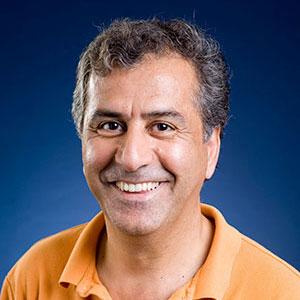
In a paper published as a lead article in the Journal of Finance in 1990, Professor Nejat Seyhun investigated whether informed investors stabilize and correct mistakes in security prices by buying undervalued assets and selling overvalued assets or destabilize security prices by jumping into already overpriced securities to create bigger bubbles and mis-valuations first, only to exploit them later. Seyhun's investigation centered on the stock market crash of Oct. 19, 1987, when the stock market crashed by 22% in one day. He found that top corporate insiders bought undervalued stocks and sold overvalued stocks in record quantities immediately following the crash. Hence, informed insiders were stabilizing security prices and not destabilizing them further. This finding provides comfort that the stock market will be self-policing and self-correcting and justifies the current regulatory system, which assumes that more information is beneficial by requiring timely, accurate, and full dissemination of information from all parties involved. Seyhun was among the first to explore various aspects of reported insider trading and its effects on share prices and shareholder wealth.

Beginning from seminal efforts by Brian Talbot at the Michigan Business School in the early 1990s, the Tauber Institute for Global Operations was designed to bring business and engineering students together for a world-class education in operations. Students would take classes in both business and engineering and complete team projects with companies. The projects were scoped to incorporate both business and engineering content, addressing important problems that had a VP-level champion at the sponsoring company. The institute was innovative by offering additional training to students beyond operations: leadership training, communications training, and providing students the opportunity to organize conferences, etc. In addition to its impact on students and companies, the Institute has for years served as an important mechanism fueling the technology and operations faculty's relevant, problem-driven research by putting them in touch with practitioners at leading companies around the world. Since its foundation, more than 1,500 graduates have completed the program as Tauber Fellows, there have been 720 summer projects executed at 145 companies, and the Institute was honored in 2012 with the prestigious UPS George D. Smith Prize from INFORMS.

The Integrated Product Development course is a unique cross-disciplinary experiential course delivered jointly by Michigan Ross, the College of Engineering, and the Stamps School of Art and Design. The course requires teams of business, engineering, and art students to execute the full range of the product development and launch process, from early-stage ideation through design and fabrication to launch stage promotion, pricing, and inventory decisions.
It has been continuously offered for more than 30 years and has been featured on CNN and in BusinessWeek, the New York Times, and the Wall Street Journal. Professor William Lovejoy originally designed this course, but it was subsequently taught by a series of dedicated professors drawn from the three units. It remains a course students remember and refer back to throughout their professional careers.

The Personal Development Plan is a simple but impactful idea that has now been utilized by approximately 6,000 BBA alums and current students. At its core, the PDP is an Excel document that helps students plan the requirements to graduate, but its usage and value go far beyond just a requirement planning tool. In 2006, the BBA degree, which had for decades been a two-year degree program, was modified to a three-year structure with a small number of first-year preferred admits. Eight years later, in 2014, the BBA curriculum was modified from a 45 business credit requirement to 58 business credits. The changes to the curriculum meant that students had significantly more time, more flexibility, and more choices in how they progressed through the BBA degree. That flexibility increased even more as we moved to a four-year program in 2017. Advisors developed the PDP as a resource to help students make the most out of this expanded college experience.
In 2014, with the launch of the 58-credit BBA curriculum, a new core course was created, BA 200. As part of BA 200, PDP was introduced as a required component of the class and is now a co-curricular component of BA 100 and BA 102. Each year, the undergraduate advising team works with over 625 new BBA students (first-year students and transfers) so that each student develops an individualized plan for their life as a college student. Ensuring that they are planning requirements is an important part of this, but in developing their plan, students are asked to reflect on their goals for their time in college while developing their PDP. What skills and competencies do they hope to develop while they are here? Are there opportunities they want to take advantage of (study abroad, participation in programs through centers and institutes, minors or dual degrees, club leadership, etc.)? The PDP is a living document that travels with students throughout their four years and becomes a reference point for continued conversations and relationship-building with advisors until graduation. The PDP has had an impact on every single BBA student since the fall of 2014, helping to open their eyes to the rich opportunities at Michigan Ross and giving them a roadmap to their unique journey as a Ross BBA.
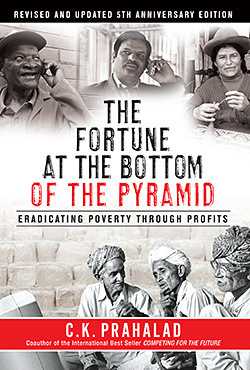
In 2002, Professor C.K. Prahalad of the Michigan Ross Business School and professor Stuart L. Hart of the University of North Carolina Kenan-Flagler Business School published the iconic article "The Fortune at the Bottom of the Pyramid" in Strategy+Business. The article suggested that "low-income markets present a prodigious opportunity for the world's wealthiest companies - to seek their fortunes and bring prosperity to the aspiring poor." Prahalad published a book with the same title five years before he passed in 2010. The article and book, with additional research and publications by Prahalad, Hart, Michigan Ross Professor Ted London, and others spawned a new business strategy for human development that has transformed into a social movement around the world known as Base of the Pyramid. The movement now includes transnationals, non-profits, social entrepreneurs, grassroots development organizations, international aid agencies, and many consulting firms dedicated to BoP strategy and implementation.

Professor Emerita Valerie Suslow and Adjunct Professor Margaret Levenstein have pursued a collaborative research agenda on the economics of cooperative behavior among firms, with a specific focus on cartels. Agreements between competing firms to reduce the intensity of competition can include actions such as price fixing, allocating geographic markets, allocating customers, and bid-rigging at auctions. Historically, such cooperative behavior was legal throughout the world but illegal in the United States under the Sherman Act of 1890.
The U.S. National Industrial Recovery Act of the early 1930s suspended price-fixing antitrust laws in certain circumstances. In the mid-1990s, after many decades of inattention, it became clear to competition policy enforcers that cartel activity was rampant and was likely causing substantial consumer harm. This spurred new leniency and amnesty policy tools to become available to firms. In their highly cited article "What Determines Cartel Success?" Levenstein and Suslow make the case that while cartels may break up due to cheating on the agreement, the more insurmountable problems are entry and adjustments in the face of changing economic conditions. "Breaking Up Is Hard to Do: Determinants of Cartel Duration" shows that cartels that turn to price wars to punish cheaters are not stable. Highly stable cartels draw upon a vast toolkit of mechanisms to enhance their stability and, therefore, their duration and economic harm.
Levenstein and Suslow's work has been cited in policy reports by organizations around the world, such as the Organization for Economic Cooperation and Development, the United Nations, and the World Trade Organization. They continue to explore hidden or overlooked sources of harm to consumers that may result from cartel activity, most recently turning their attention to the role played by vertical relationships between firms engaged in horizontal collusion, as well as how collusion may be facilitated by the use of a price index in long-term contracts.
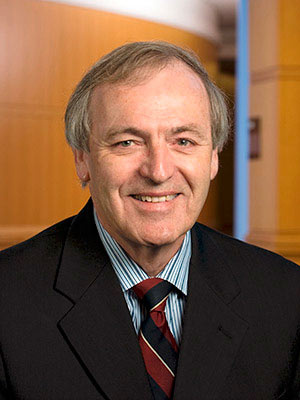
Professor David Brophy brought the study of small businesses and private financial markets (now known as alternative, in contrast to publicly traded markets) to Michigan Ross and the state of Michigan before it was recognized as a legitimate area of study at top research universities. This process started in the mid-to-late seventies, and Brophy relentlessly created awareness in Michigan and educated students interested in this space. For over fifty decades, until his recent retirement, Brophy designed and taught all Michigan Ross venture capital and private equity courses.

Professor Jim Walsh was elected as the 65th president of the Academy of Management in 2006, making him only the second Michigan faculty member to lead the Academy. Walsh took stock of the approximately 16,000 members who lived in more than 100 countries at the time and noted that very few of them resided on the continent of Africa. Knowing that Africa, the cradle of civilization, is home to over a billion people and more than 1,000 universities and that the continent was poised for enormous population and economic growth, he wanted to bridge the gap and reach out to the teacher-scholars on the continent. Fully aware of the terrible history of colonization, he decided to simply create space for colleagues in Africa to meet their colleagues from the rest of the world. The first step in the process was to work with others to co-found the African Academy of Management. His continued work culminated in a 2013 AOM Africa Conference, in which approximately 300 colleagues from the world over journeyed to Johannesburg to share and imagine new research and teaching ideas. Since that time, the Africa Academy of Management has hosted a number of faculty development workshops, launched the Africa Journal of Management, and held conferences across the continent. In short, Africa-centered scholarship has burgeoned. Beyond that, the Ross School was just granted affiliate member status in the Association of African Business Schools. Professor Walsh wanted to be sure that we too are a part of the emerging scholarly conversations and evolving business practices on the continent.

